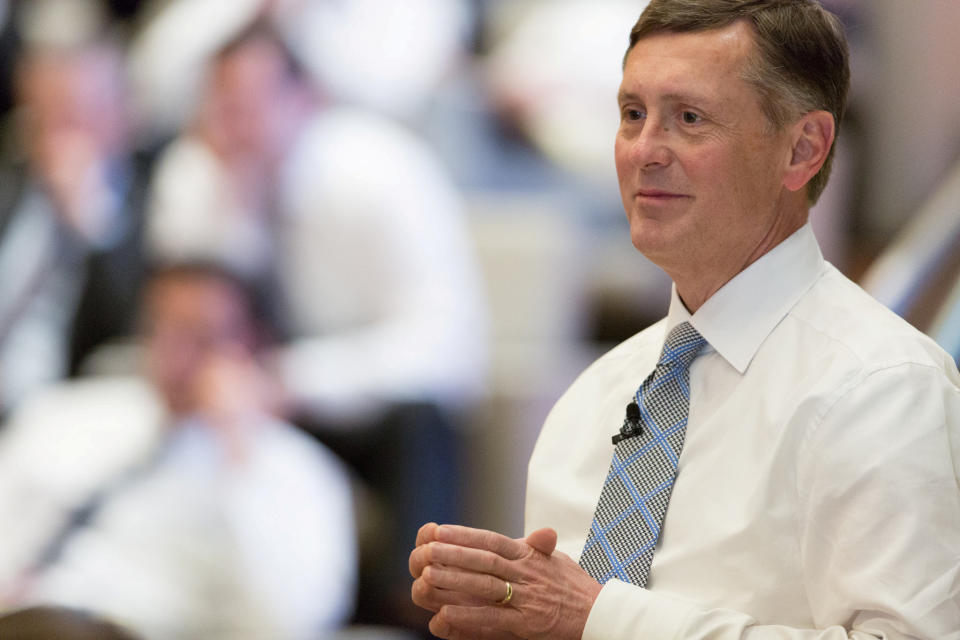A single word reveals how the Fed is thinking about the market rout

In his his first public remarks since becoming the Federal Reserve Board’s newest member, Richard Clarida did not sound the alarm on the market’s recent sell-off.
The new vice chair painted a positive outlook on the economy, noting that it is “as near as it has been in a decade” to meeting the Fed’s dual-mandate of maximum employment and price stability. Clarida, formerly an advisor with PIMCO, added that he could even support more normalization of interest rates if he sees strong growth, robust employment gains and a “material rise” in inflation.
But Morgan Stanley’s Ellen Zentner wrote that it is what’s missing from Clarida’s prepared that speaks volumes: the market rout that erased the calendar year’s gains.
Clarida’s omission of market commentary provides a “lens into how policymakers broadly are thinking about recent market moves in the context of what has been extraordinarily easy financial conditions,” Zentner said.
The key word: “sustained”
During the Q&A portion of his appearance, Clarida was asked about the market sell-off and responded by reiterating that he sees the economy as “very, very solid,” briefly acknowledging that financial conditions are relevant for the economic outlook only if they are “sustained.”
“The word ‘sustained’ is key here,” Zentner said. In other words, Clarida was acknowledging that it would take a lot more than the recent sell-off to indicate a change in Fed thinking.
Ken Matheny, senior economist at IHS Markit’s Macroeconomic Advisers, told Yahoo Finance that Clarida is following the unspoken rule of not reading the tea leaves on markets.
“If you’re commenting on financial markets, particularly in a short run sense, you may inadvertently affect markets in a way you don’t intend to,” Matheny said.
In remarks a week ago, Fed vice chair Randal Quarles also shied away from interpreting market movements, about a week after the Dow lost 800 points. On Oct. 26, Cleveland Fed President Loretta Mester, told CNBC that market swings are a “risk” but said she has not seen anything that would change her mind on the current policy path.
“This is a natural thing that’s going on in the market,” Mester, a voting member of the current Federal Open Market Committee, said.
Some Fed policymakers have leaned into market commentary. Shortly after the February sell-off, then-New York Fed President Bill Dudley described the stock market drop as “small potatoes.”
What Wall Street is saying
Analysts have not been so quiet on equity markets. Goldman Sachs noted that the sell-off has “substantially tightened U.S. financial conditions” and Jefferies wrote that the combination of a strong dollar and rising U.S. bond yields have “acted as a headwind to share prices.”
BNP Paribas, however, thinks the Fed will have to step in at some point.
“In light of recent market moves, the Fed is likely to reassess broader financial conditions,” their analysts wrote. BNP Paribas added that if markets move closer to neutral, such as the S&P reaching 2500, the Fed could “pause its rate hike plans.”
Brian Cheung is a reporter covering the banking industry and the intersection of finance and policy for Yahoo Finance. You can follow him on Twitter @bcheungz.
Read more:
Fed Vice Chair Quarles prefers ‘more gradual’ rate hikes
Prudential Financial to shed its post-crisis ‘too big to fail’ label
Big banks reveal challenges in consumer credit, mortgages


